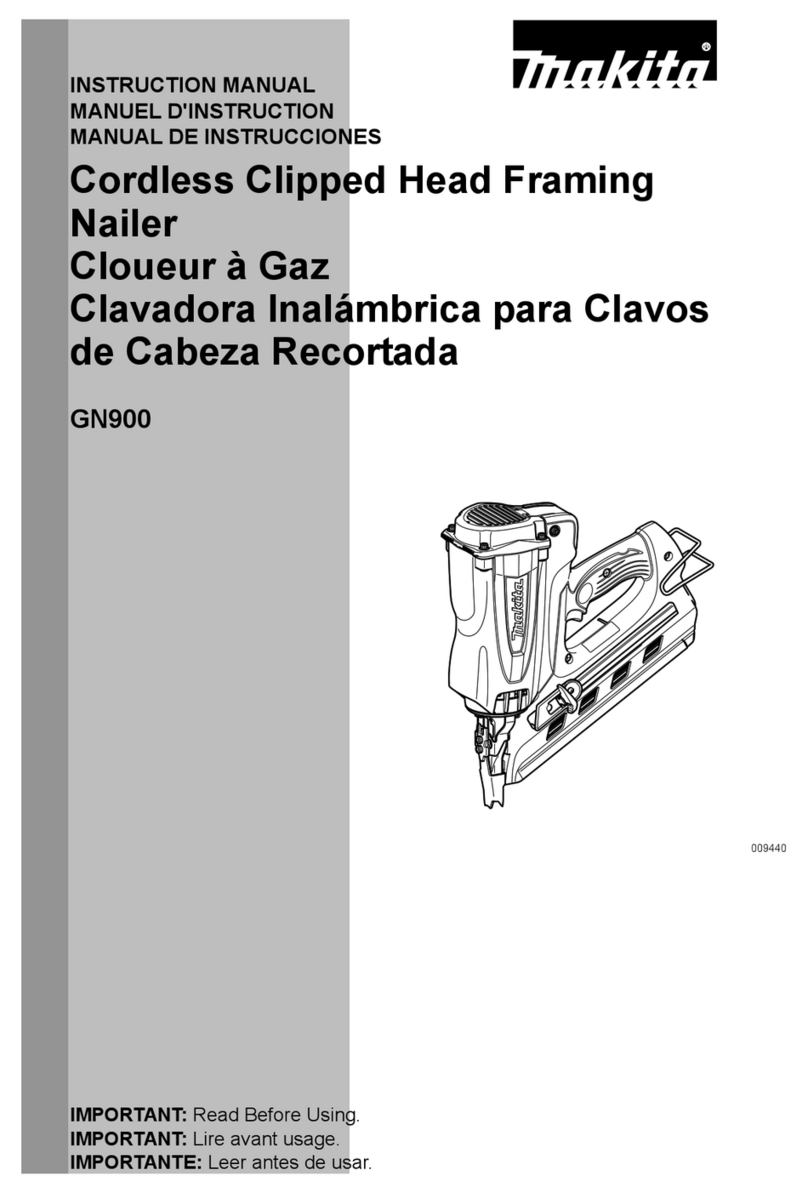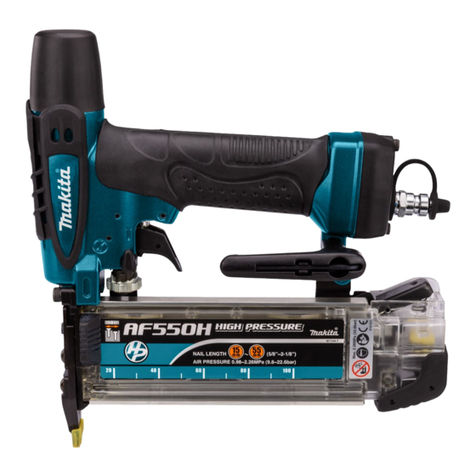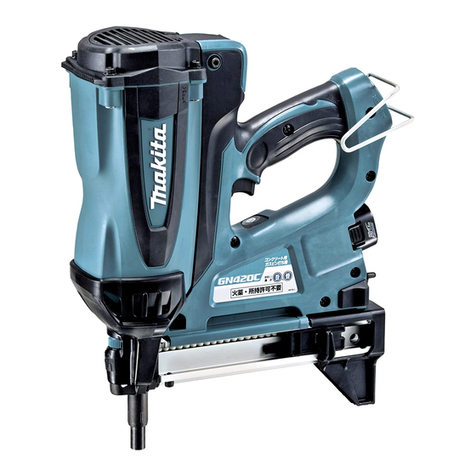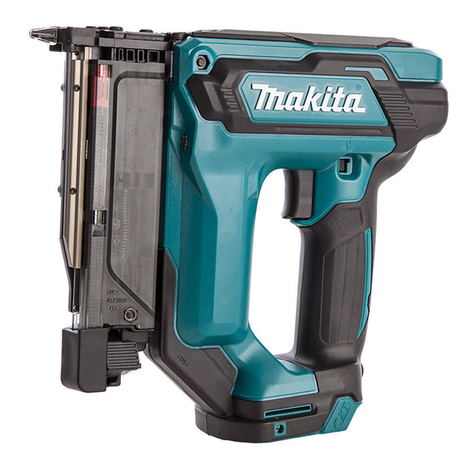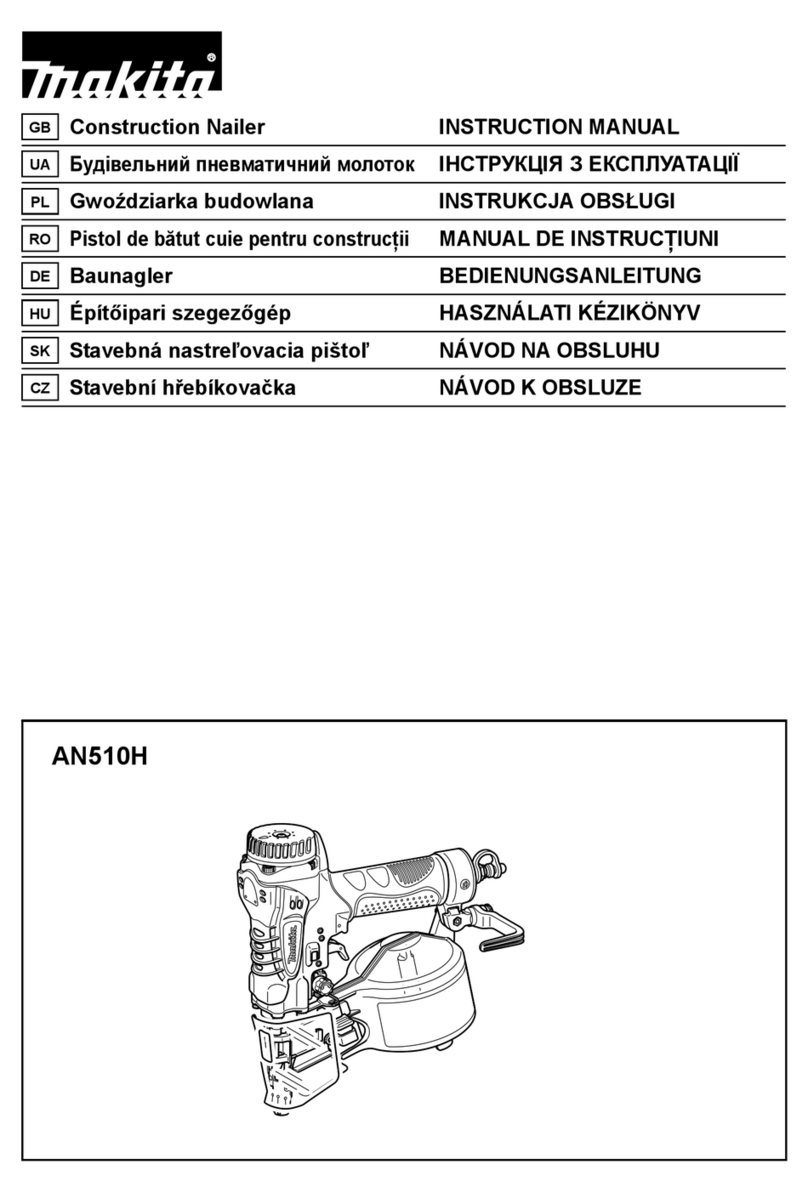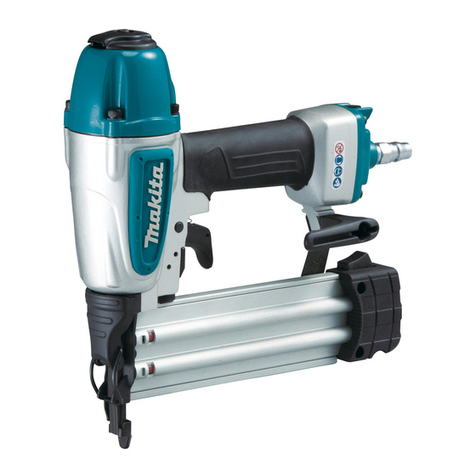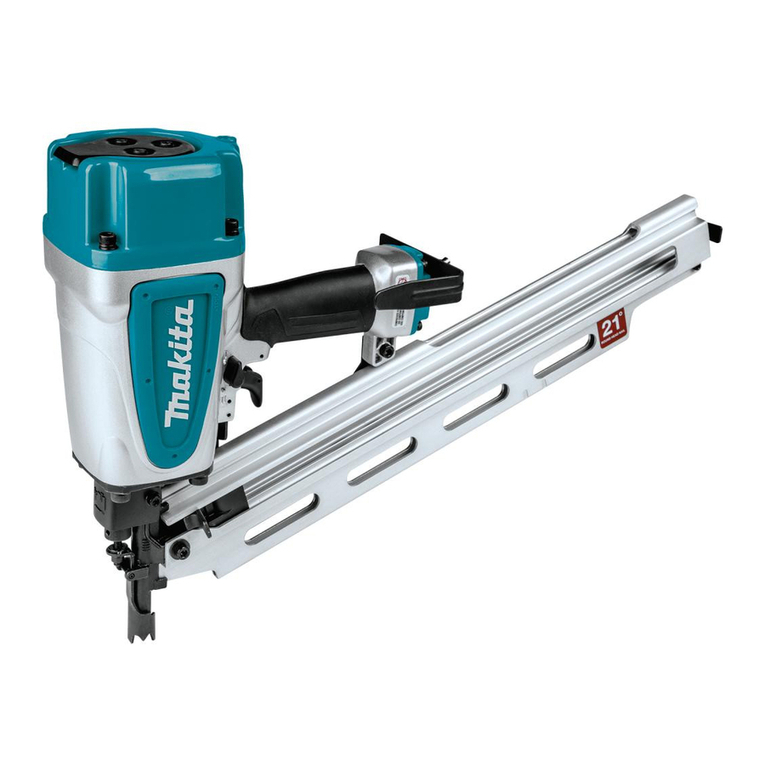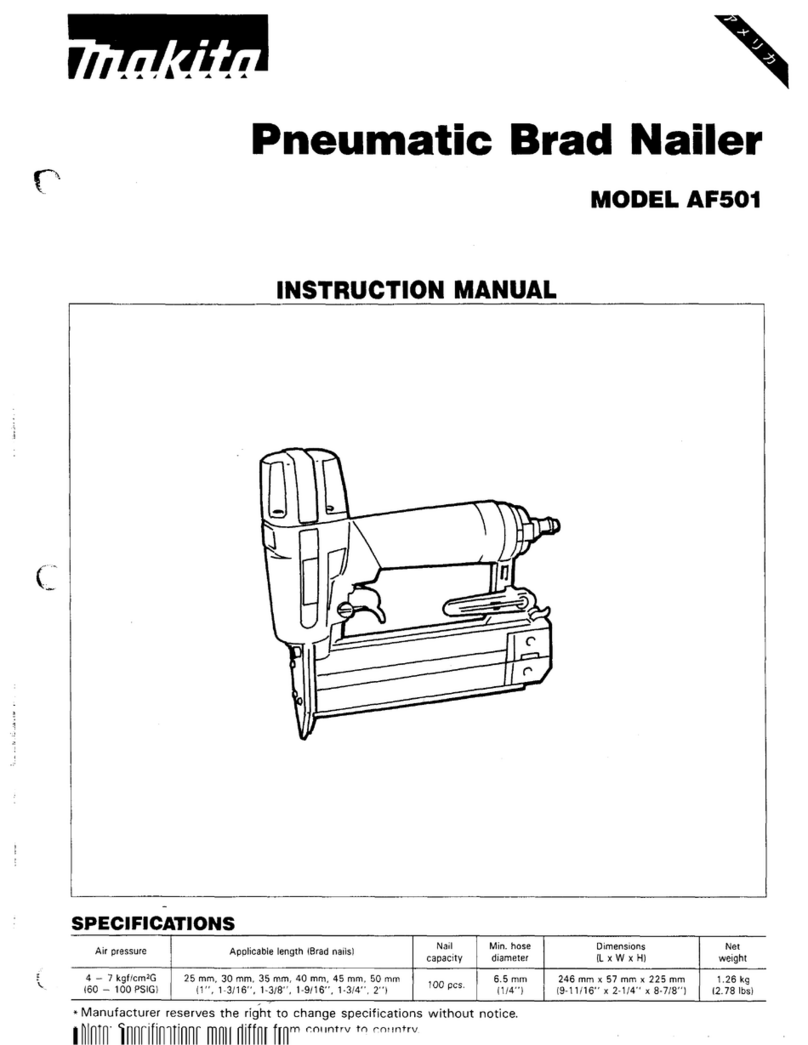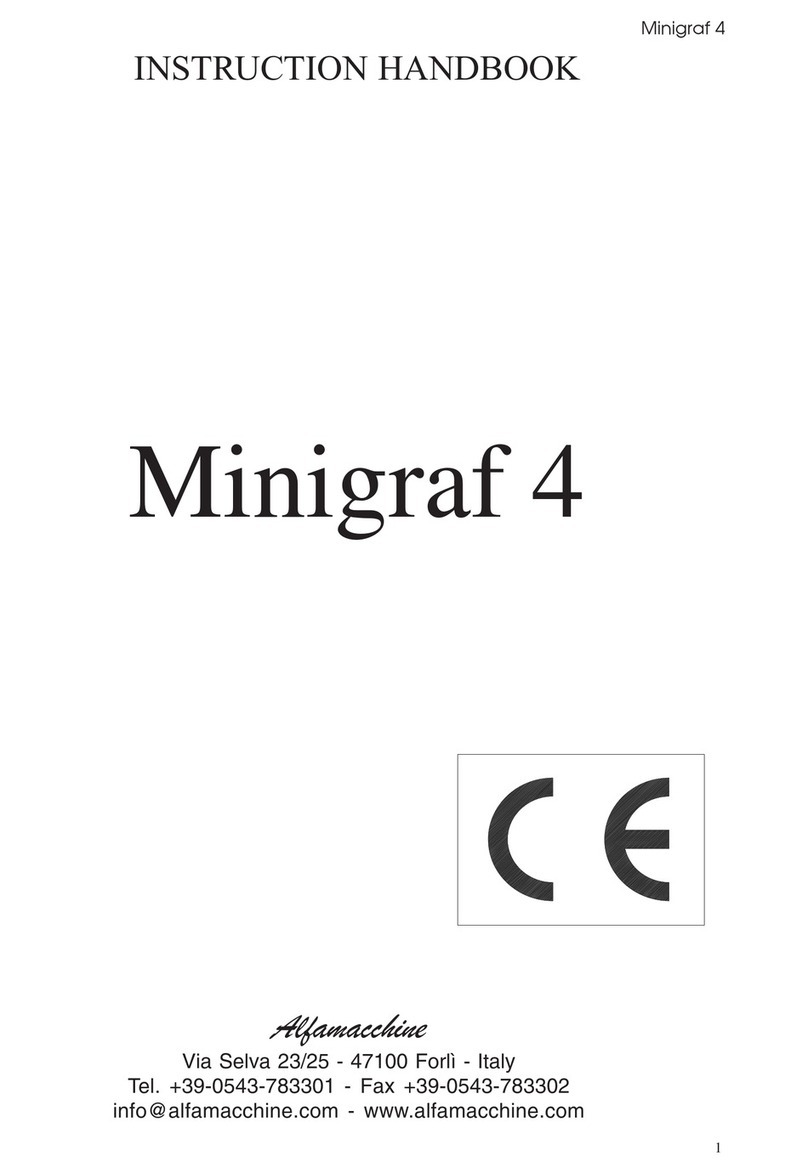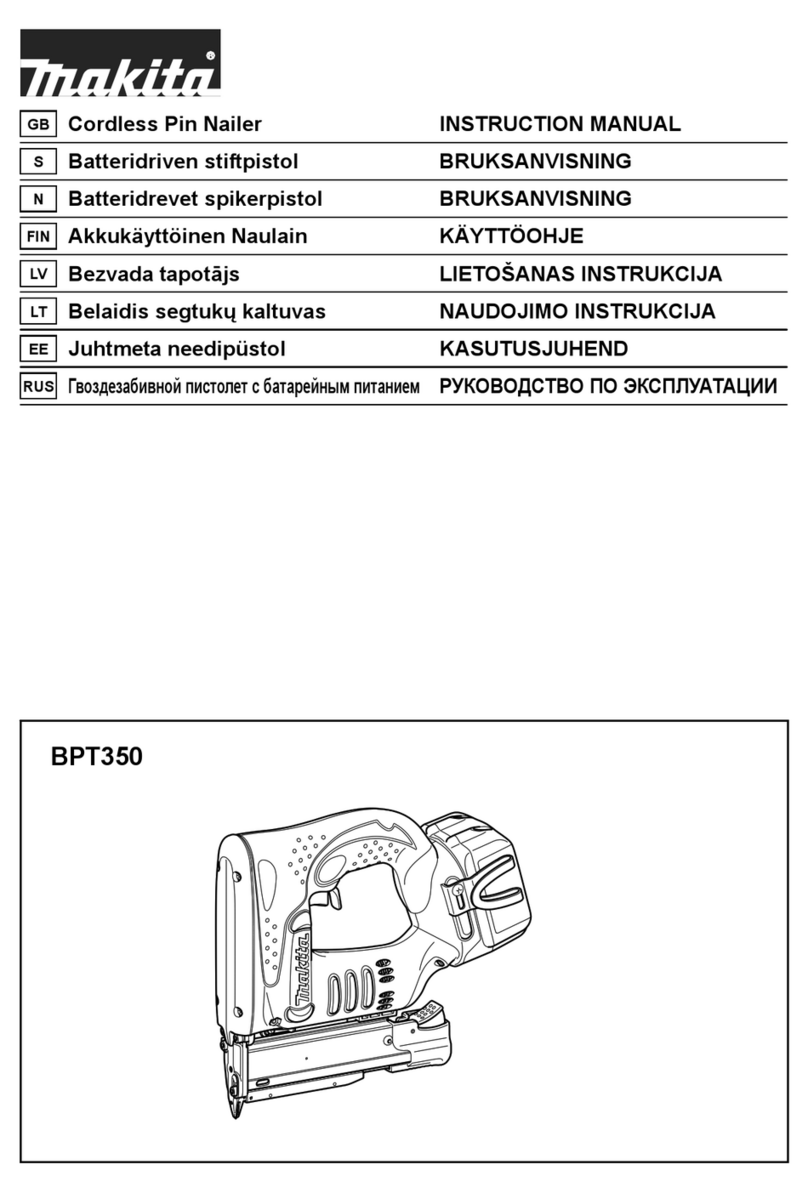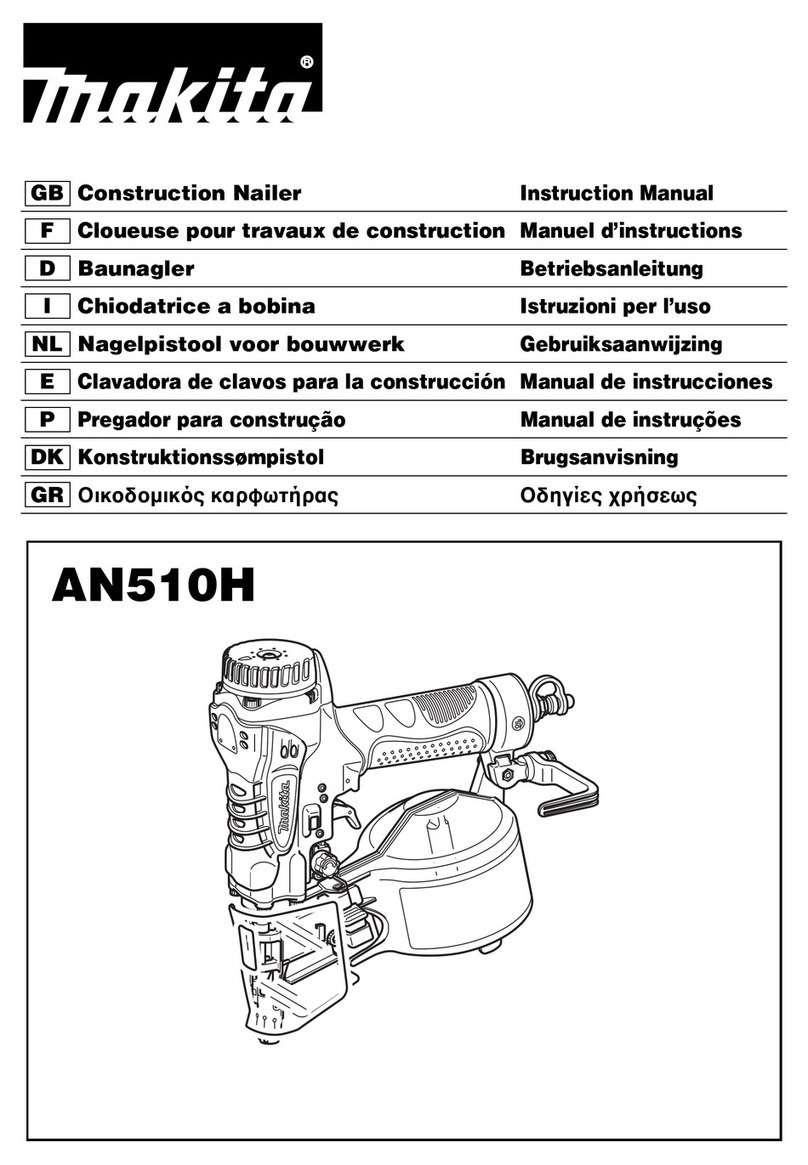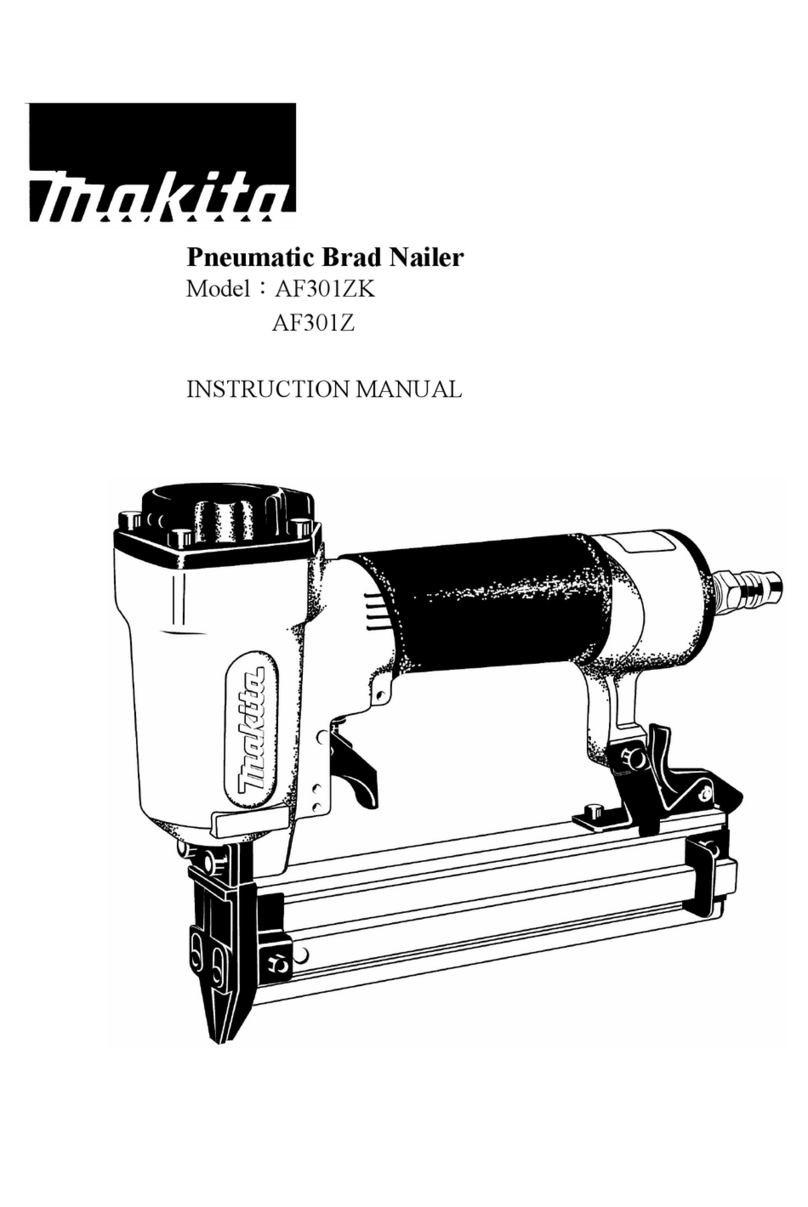
3ENGLISH
Operating controls
1. Do not use a tool with missing or damaged
safety warning label(s.)
2. A tool that is not in proper working order must
not be used. Tags and physical segregation
shall be used for control.
3. Do not remove, tamper with, or otherwise
cause tool operating controls to become
inoperable.
4. Do not operate tool if any portion of the tool
operating controls is inoperable, discon-
nected, altered, or not working properly.
Tool handling
1. Only persons who have read and understand
the tool operating/safety instructions should
operate the tool.
2. Always assume that tool contains fasteners.
3. Do not point tool toward yourself or anyone
whether it contains fasteners or not.
4. Keep bystanders and children away while
operating tool.
5. Do not actuate tool unless tool is placed rmly
against the workpiece.
6. Respect tool as a working implement.
7. Do not engage in horseplay.
8. Stay alert, focus on your work and use com-
mon sense when working with tools.
9. Do not use tool while tired, after having con-
sumed drugs or alcohol, or while under the
inuence of medication.
10. Do not overreach. Keep proper footing and
balance at all times.
11.
Do not hold or carry tool with a nger on the trigger.
12. Drive fasteners into proper work surface only.
13. Do not drive fasteners into other fasteners.
14. After driving a fastener, tool may spring back
(“recoil”) causing it to move away from the
work surface. To reduce risk of injury always
manage recoil by:
a) always maintaining control of tool.
b) allowing recoil to move tool away from
work surface.
c)
not resisting recoil such that tool will
be forced back into the work surface. In
“Contact Actuation Mode,” if workpiece
contact is allowed to re-contact work sur-
face before the trigger is released, an unin-
tended discharge of a fastener will occur.
d)
keeping face and body parts away from tool.
15. When working close to an edge of a workpiece
or at steep angles use care to minimize chip-
ping, splitting or splintering, or free ight or
ricochet of fasteners, which may cause injury.
16. Keep hands and body away from fastener
discharge area of tool.
17. Do not load tool with fasteners when any one
of the operating controls is activated.
18. Do not operate tool with any power source
other than that specied in tool operating/
safety instructions.
19. Do not operate tool with any operating pres-
sure other than that specied in tool operating/
safety instructions.
20. Always select an actuation system that is
appropriate to the fastener application and the
training of the operator.
21. Use extra caution when driving fasteners into
existing walls or other blind areas to prevent
contact with hidden objects or persons on
other side (e.g., wires, pipes.)
22. Do not lift, pull or lower tool by the hose.
Disconnecting tool
Disconnect tool from the power source when:
1. Not in use;
2. Performing any maintenance or repairs;
3. Clearing a jam;
4. Elevating, lowering or otherwise moving the
tool to a new location;
5. Tool is outside of the operator’s supervision or
control; or
6. Removing fasteners from the magazine.
Additional safety instructions
1. The area should be sufciently illuminated to
assure safe operations. The area should be
clear and litter-free.
2. There may be local regulations concerning
noise which must be complied with by keeping
noise levels within prescribed limits. In certain
cases, shutters should be used to contain
noise.
3. Check walls, ceilings, oors, roong and
the like carefully to avoid possible electrical
shock, gas leakage, explosions, etc. caused by
striking live wires, conduits or gas pipes.
4. On rooftops and other high locations, drive
fasteners as you move forward. It is easy to
lose your footing if you drive fasteners while
inching backward. When driving against per-
pendicular surface, drive fasteners from the
top to the bottom. You can perform the opera-
tions with less fatigue by doing so.
5. Do not leave the loaded tool or the air com-
pressor under pressure for a long time out in
the sun. Be sure that dust, sand, chips and
foreign matter will not enter the tool in the
place where you leave it setting.
6. Perform cleaning and maintenance right after
nishing the job. Keep the tool in tip-top condi-
tion. Lubricate moving parts to prevent rusting
and minimize friction-related wear. Wipe off all
dust from the parts.
7. Do not disconnect the air hose with a nger
on the trigger. An unexpected driving will cause
serious injury when the air hose is connected.
8. When you drop or strike the tool, check the
tool damage or crack and make sure that
safety systems are in working order before
operation. As there is high pressure inside the
tool, failure to do so will cause serious injury.
9. Ask Makita's Authorized service centers for
periodical inspection of the tool.
10. To maintain product SAFETY and RELIABILITY,
maintenance and repairs should be performed
by Makita Authorized or Factory Service
Centers, always using Makita replacement
parts.
SAVE THESE INSTRUCTIONS.



